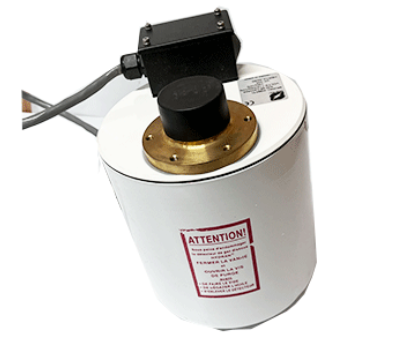LNG& Natural Gas: Three highlights highlight the strong correlation between the two
The natural gas market can be mainly divided into two parts: pipeline gas market and LNG market. At present, pipeline gas market still occupies a dominant position with 86% consumption ratio, and LNG market consumption volume can only account for about 14% of the whole natural gas market.
Compared with pipeline gas, the marketization degree of LNG is relatively high and mature, and the immediate and flexible market changes make the LNG market naturally get more attention from market participants. However, there is no doubt that the LNG market is an intermediate market, which was initially used to supplement and meet the needs of the natural gas market and gradually developed. The trend of the LNG market depends on the changes of the pipeline gas market to a large extent, and then has a certain counter-effect on the pipeline gas market. This means that the LNG market reflects the development of the overall natural gas market both in terms of supply and demand, cost and other driving factors, as well as in the specific price presentation, especially in the recent stage of unconventional changes in the LNG market, it is particularly important to explore the close relationship between the LNG market and the overall natural gas market.
The formation of LNG price trend is the result of supply and demand, cost and other factors, and these factors are closely related to the overall natural gas market.
The characteristics of the LNG intermediate market are obvious. Supply and demand are subject to changes in the pipeline gas market
China's natural gas supply is composed of three parts: domestic production, pipeline gas imports and LNG imports. On the one hand, the production of LNG plants cannot be separated from the supply of upstream gas sources, and the shipments of receiving stations are the result of partial import conversion, which means that the supply of natural gas including self-produced and imported will directly determine the output of LNG plants and the tank batch of receiving stations. On the other hand, the LNG market, as an intermediate market, plays an important role in peak regulation and supplement. When the demand for pipeline gas cannot be fully met by its own supply, part of it is bound to be transformed into the potential demand or even the actual demand of the LNG market. This strong correlation between market supply and demand is particularly prominent in the recent unconventional market conditions.

In the winter of 2021, in order to ensure that the heating demand can be met in a timely and effective manner, the domestic gas storage and other early reserves are sufficient, and natural gas production continues to rise. In November, natural gas production was about 32,747 billion cubic meters, an increase of 10.72% from the previous month, and a year-on-year increase of 10.09%. At that time, the heating demand for LNG peak adjustment is very little, in the absence of seasonal demand support, LNG prices fell significantly, and some regional factories even appeared losses, the formation of oversupply situation, LNG plant load decreased significantly, at this time to reduce the burden is more to reduce losses. After the Spring Festival, it is also in the domestic pipeline gas shortage caused by a wide range of continuous low temperature weather, LNG heating peak demand has gained an opportunity to climb, which is also the main reason for the rise in LNG prices in February this year.
In recent months, the changing natural gas supply landscape has again had a greater impact on supply and even prices in the LNG market. Under normal circumstances, due to the relatively limited natural gas resources, the domestic market still has a considerable part of the demand dependent on imports to meet, according to Zhuochuang information statistics, in 2021 China's natural gas market external dependence reached more than 45%, therefore, once the import factor has an impact on the supply of natural gas market, it will directly drive the change of LNG supply. Since March 2022, geopolitical factors in Eastern Europe have become increasingly prominent, LNG imports have fallen by 17.97% year-on-year, and the current import supply, including pipeline gas imports and LNG imports, accounts for only about 36%, which brings more pressure on domestic natural gas supply, and inevitably makes the overall supply of natural gas seem a little stretched. This tightening of supply has had a direct and indirect impact on the LNG market in several ways.
First, in the state of tight balance between supply and demand, the demand of the pipeline gas market is difficult to be fully released, and it is bound to be transformed into the potential demand of the LNG market to a certain extent, which is also one of the important factors supporting LNG prices. Second, the supply situation of the overall natural gas market also directly leads to the current LNG supply is still at a relatively low level, according to Zhuochuang information statistics, LNG supply in March was about 2.4750 million tons, a year-on-year decline of 31.79%, of which, the receiving terminal shipments affected by imports more reached a year-on-year decline of 66.07%. Not only that, due to the lack of sufficient gas sources, the price of upstream raw gas costs in factories is still high, and the change of the supply situation of the entire natural gas market through the transmission of LNG supply, cost and other factors has played a pivotal role in the rise of LNG prices against the law.
Second, the cost of pipeline gas source is strongly related to the price of LNG plant
The supply sources of the domestic LNG market mainly include the export of LNG in the receiving station and the self-production of LNG plants. Among them, the shipment price of LNG in the receiving station is subject to the influence of the comprehensive import and landing price of LNG, which is closely related to the import factor. LNG plants are important direct non-resident downstream users of domestic pipeline gas, and the cost of raw gas determines the production cost of LNG plants, so the impact on the LNG shipment price of plants and even the overall price level of domestic LNG is beyond doubt. At the same time, from the perspective of determining the price of gas source, we should also see the important reaction of LNG market to the price of pipeline gas source. Rather than the change of pipeline gas source price affecting the price trend of LNG market, it is better to say that there is a close relationship between the two.
At present, the gas source price adjustment mechanism of domestic LNG plants can be basically divided into two categories, one is the online auction organized by the upstream gas source on a regular basis, and the other is the gas source enterprises directly specify the range of raw gas price changes.

First of all, in terms of the way that upstream gas sources regularly organize online auction, the gas source enterprises usually specify the starting price and the bidding volume, and then the users of each LNG plant participate in the bidding, and finally produce the actual transaction volume and the actual transaction price. Taking Northwest China and other places as an example, on the one hand, the determination of the starting price level will often pay attention to the trend of the domestic LNG market or even the status quo of LNG spot imports, so its changes reflect the recent changes in the LNG market to a certain extent. On the other hand, bidding, which determines the price of raw material gas and gas source in factories through competition, can itself reflect the supply situation of pipeline gas market. In the case of loose supply and demand of pipeline gas market, bidding gas is abundant, and more bidding will be converted into listing and bidding. The real bidding auction model is more suitable for the tight supply of the market period, the recent raw gas auction volume compared with the same period last year reached more than 60% reduction, the final actual transaction price of the auction continues to remain high, LNG plants and other market participants generally reflect that this year's plan compared with previous years there is indeed a gap. All aspects of plant gas supply changes reflect the recent tight balance between supply and demand in the pipeline gas market, and also directly determine the supply changes in the LNG market.
Secondly, in addition to online bidding, there are still most regional factory gas prices are directly adjusted by the gas source enterprises, although the specific adjustment mechanism varies from place to place, but there are generally no more than two types. One is to regularly adjust the next rise and fall of raw gas prices according to the recent volatility trend of LNG market prices. Under this adjustment mechanism, the changes in LNG prices are projected to the price level of pipeline gas directly supplied to factory gas sources in a timely manner. This pricing model is mainly concentrated in Shanxi Province. The other is to flexibly adjust according to the LNG market situation on the basis of distinguishing the off-peak season. In winter, the demand for pipeline gas heating is strong, the supply pressure of raw gas in LNG plants is large, and the price usually rises. In the off-season phase of pipeline gas consumption, the supply pressure of pipeline gas is small and the supply of gas source is abundant will also cause the price of factory gas source to fall. Therefore, the seasonal characteristics of factory gas price based on this adjustment mechanism also reflect the supply and demand changes of pipeline gas market, or even the whole natural gas market.
At present, although the price of the domestic natural gas market continues to be high, the market-oriented reform process of the pipeline gas market has been significantly accelerated, and the way is often a reverse reference to the price trend of the domestic LNG market. The main gas sources of LNG plants in China are mainly in the northwest, southwest, Shanxi, Henan and other regions. The gas source costs of LNG plants in the northwest are mainly based on the trading center auction mode, and the gas source prices of some plants in the southwest are also directly linked to the fluctuations of the northwest auction prices. The promotion of auction mode makes the release of auction volume and the level of auction price become a strong support for the strong correlation between pipeline gas and LNG market. At present, not only is the LNG market strongly related to LNG gas sources, but non-resident retail prices of urban gas in many areas of the industry have also begun to try to partly link LNG prices.
Third, the coastal LNG receiving terminal market, LNG and pipeline gas market competition relationship is strong
Due to the characteristics of LNG intermediate market and supplementary peak balancing mentioned above, pipeline gas and LNG have a certain competitive relationship in meeting the needs of various fields, especially in the coastal areas of North, East and South China, where the industrial consumption volume is relatively considerable, and the competition and cooperation between the two is more obvious.

According to the statistics of Zhuochuang Information, in 2021, the consumption of LNG in the coastal regions, including Shandong, Hebei, Guangdong and other provinces, reached 19,791,100 tons, accounting for more than 52% of the total domestic consumption, and the huge consumption volume of coastal areas has long played a vital role in the domestic LNG market. In recent years, industrial point supply enterprises in coastal areas have developed rapidly, and industrial fuel accounts for 41% of the total LNG consumption, which is why the use of local point supply enterprises can have an immediate impact on LNG prices, and the changes in LNG prices can also be clearly reflected in the current situation of point supply and demand. At present, the construction and development of pipeline networks in coastal areas are also relatively mature, especially in North and East China. In these areas where the pipeline network is laid intensively, most of the points for enterprises have the dual gas source guarantee of pipeline gas and LNG, which not only enables the terminal enterprises to flexibly switch and choose between the two according to the change of price advantage. It also promotes the price competition between pipeline gas and LNG. In the stage of sufficient LNG price rise, the price advantage of pipeline gas has been highlighted, and more and more enterprises will switch to pipeline gas. This transfer of consumer demand of industrial enterprises on the one hand will stimulate pipeline gas prices, and on the other hand, LNG prices will gradually fall due to lack of demand support. Similarly, at present, the pipeline gas terminal retail price is becoming more and more normal to guide and link LNG prices.
Iv. Summary
On the whole, no matter in terms of supply, demand, market mentality or price, the relationship between the entire natural gas market and the LNG market is obviously close and bidirectional. Through the development status of the overall natural gas market, we can see the essence of the changes in the LNG market, and the changes in the LNG price trend can not only reflect the current situation of LNG supply and demand. It can reflect the current situation of domestic natural gas supply and demand. China's LNG market mechanism is perfect, the competitive nature is strong, LNG market to a certain extent has become the auxiliary pipeline gas market on the road to the market maturity of the medium, which is also in the process of China's natural gas market reform process "Chinese characteristics".
- EMERSON
- Honeywell
- CTI
- Rolls-Royce
- General Electric
- Woodward
- Yaskawa
- xYCOM
- Motorola
- Siemens
- Rockwell
- ABB
- B&R
- HIMA
- Construction site
- electricity
- Automobile market
- PLC
- DCS
- Motor drivers
- VSD
- Implications
- cement
- CO2
- CEM
- methane
- Artificial intelligence
- Titanic
- Solar energy
- Hydrogen fuel cell
- Hydrogen and fuel cells
- Hydrogen and oxygen fuel cells
- tyre
- Chemical fiber
- dynamo
- corpuscle
- Pulp and paper
- printing
- fossil
- FANUC
- Food and beverage
- Life science
- Sewage treatment
- Personal care
- electricity
- boats
- infrastructure
- Automobile industry
- metallurgy
- Nuclear power generation
- Geothermal power generation
- Water and wastewater
- Infrastructure construction
- Mine hazard
- steel
- papermaking
- Natural gas industry
- Infrastructure construction
- Power and energy
- Rubber and plastic
- Renewable energy
- pharmacy
- mining
- Plastic industry
- Schneider
- Kongsberg
- NI
- Wind energy
- International petroleum
- International new energy network
- gas
- WATLOW
- ProSoft
- SEW
- wind
- ADVANCED
- Reliance
- YOKOGAWA
- TRICONEX
- FOXBORO
- METSO
- MAN
- Advantest
- ADVANCED
- ALSTOM
- Control Wave
- AB
- AMAT
- STUDER
- KONGSBERG
- MOTOROLA
- DANAHER MOTION
- Bently
- Galil
- EATON
- MOLEX
- Triconex
- DEIF
- B&W
- ZYGO
- Aerotech
- DANFOSS
- KOLLMORGEN
- Beijer
- Endress+Hauser
- MOOG


Email:wang@kongjiangauto.com
























































































